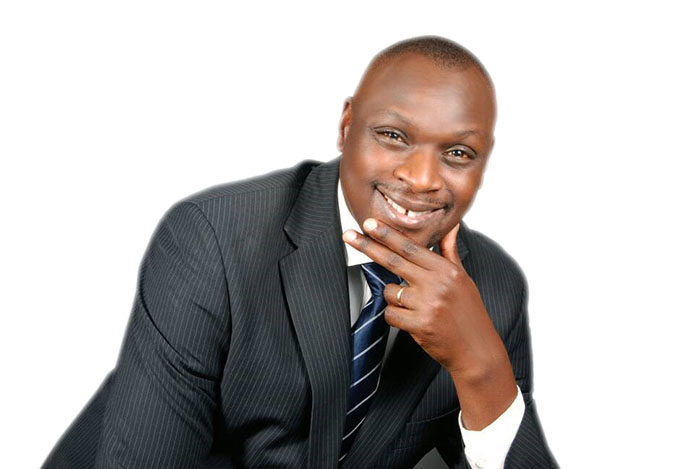
Listening carefully at the eulogies said at the funeral service of our beloved Elder Bishop Steven Senfuma, one statement caught my attention. That a few weeks before his death he had reached out to several pastors to get advise on how he could restructure the church leadership. A task every genuine Founding or Lead Pastor must undertake for the future of the church. Allow me share my thoughts on the church and succession planning.
What Bishop Senfuma (late) was doing in Human Resource Management (HRM) is called Succession Planning (S.P). Simply put, succession planning can be defined as a process for identifying and developing new leaders who can replace old leaders when they leave, retire or die.
It is important to note that in the initial stages, succession planning is usually a closed process, so much that those who have been selected are not likely to know that they are on a succession hit list. Many corporate organisations use succession planning as away to secure the future, a principle churches must learn to secure the future of any church ministry.
There are several models of succession planning, for example in dictatorships, succession planning aims at continuity of a reign to avoid a chaotic transfer of power. In monarchs, succession planning is according to the order of succession. However in business, succession planning entails developing internal people or sometimes head hunt persons with the potential to fill key business leadership positions in the organisation.
Succession planning in church setting is more internally focused than external.
Acts 1:21-22 says, “Therefore it is necessary to choose one of the men who have been with us the whole time the Lord Jesus was living among us, 22 beginning from John’s baptism to the time when Jesus was taken up from us. For one of these must become a witness with us of his resurrection.”
In light of the above scripture church succession planning can take on several forms, in other circles these forms are also known as church governance models. Some churches have vague structures, while others have formal well grounded structures. I hope this article empowers churches to adopt succession planning to streamline leadership challenges in the church setting.
At this point, it is suffice to say that all these models have both merits and demerits but when prayerfully considered a good successor can be identified.
1. Hierarchical succession planning (rule by personality)
In this kind of succession planning model, the system is largely controlled by the powerful personality being followed. This hierarchical structure happens in independent, authoritarian churches and personally driven churches where the pastor is seen as God’s voice to the people. If well organised, the Lead Pastor will select a successor or he would have made references to whom the possible successor would be for the system to endorse in case of any eventuality.
2. Democratic succession planning (rule by people):
In this succession planning model, in case of any replacement needed in the church the people choose their leader.
One author noted that God can use any form of church government or succession planning model IF all the people are godly, mature and obedient to the voice of God.
3. Theocratic Model (rule by God)
Acts 14:23 says, “And when they had appointed elders for them in every church, with prayer and fasting they committed them to the Lord in whom they believed”.
At this point I should note that all leadership is functional, but to understand the Theocratic Model well, two model can be derived from it, namely Functional Leadership Model and Structural Leadership Model.
a) Functional Leadership Model
Functional leadership is defined by what it does as part of the administration of the government of God through the church on Earth. One writer pointed out that the role of leadership is not to be a mediator between men and God, but to equip people to do the ministry that God has called them to do as seen in Ephesians 4:11-13. Therefore Succession Planning using this model means the Lead Pastor would spend lots of time equipping people with the necessary Knowledge, Skills and Attitude (KSA) to manage and perform several functions whether he is present or not.
b) Structural Leadership Model
Also known as the servant-hood model. Our Lord Jesus is the chief servant. Jesus came to model humility and servant-hood. When you carefully study the leadership of Jesus, he strongly manifests as a coach. One author said too often we have seen authority as a pyramid of power, yet Jesus actually came to model a Coach who helps others succeed, to come to their full potential, and fulfill their calling before God.
Matthew 20:26-28 captures it very well;
“Yet it shall not be so among you; but whoever desires to become great among you, let him be your servant. And whoever desires to be first among you, let him be your slave—just as the Son of Man did not come to be served, but to serve, and to give His life a ransom for many.”
So succession planning in the structural model is laboring to develop the Jesus servant-hood spirit in all church members prepared to serve whether you are present or not, nothing changes.
In other words the Theocratic Model combines both the Functional and Structural Model of leadership. This model is most preferred for a church that patterns it’s leadership to the example of Jesus our Lord.
In conclusion, one will note that the Hierarchical model is most prone to abuse of people, the Presbyterian system is supposed to be biblical in nature, but in practice it has become democratic in function, political and not spiritual in nature. Similar to the democratic model is the corporate or business model, where the board is the ruling power, but the pastor is merely hired to do what the board says.
Considering all the above models Theocratic seems to produce better results for the Kingdom of God and the sustainability of the Church God has entrusted with us beyond the Founder.
The author is a Pastor and member of the National Fellowship of Born Again Pentecostal Church in Uganda (NFBPC)
joseph.magongo@gmail.com

